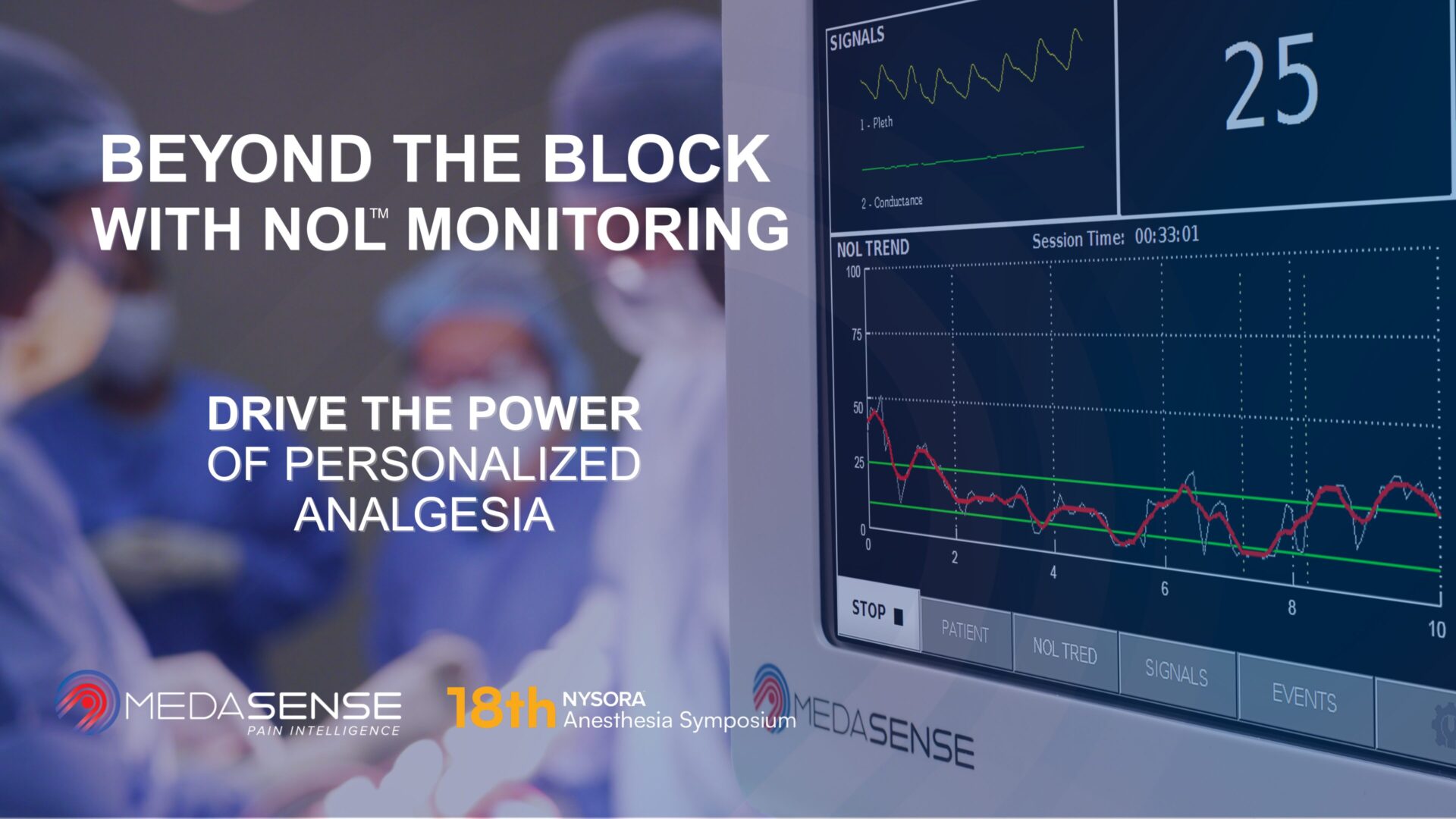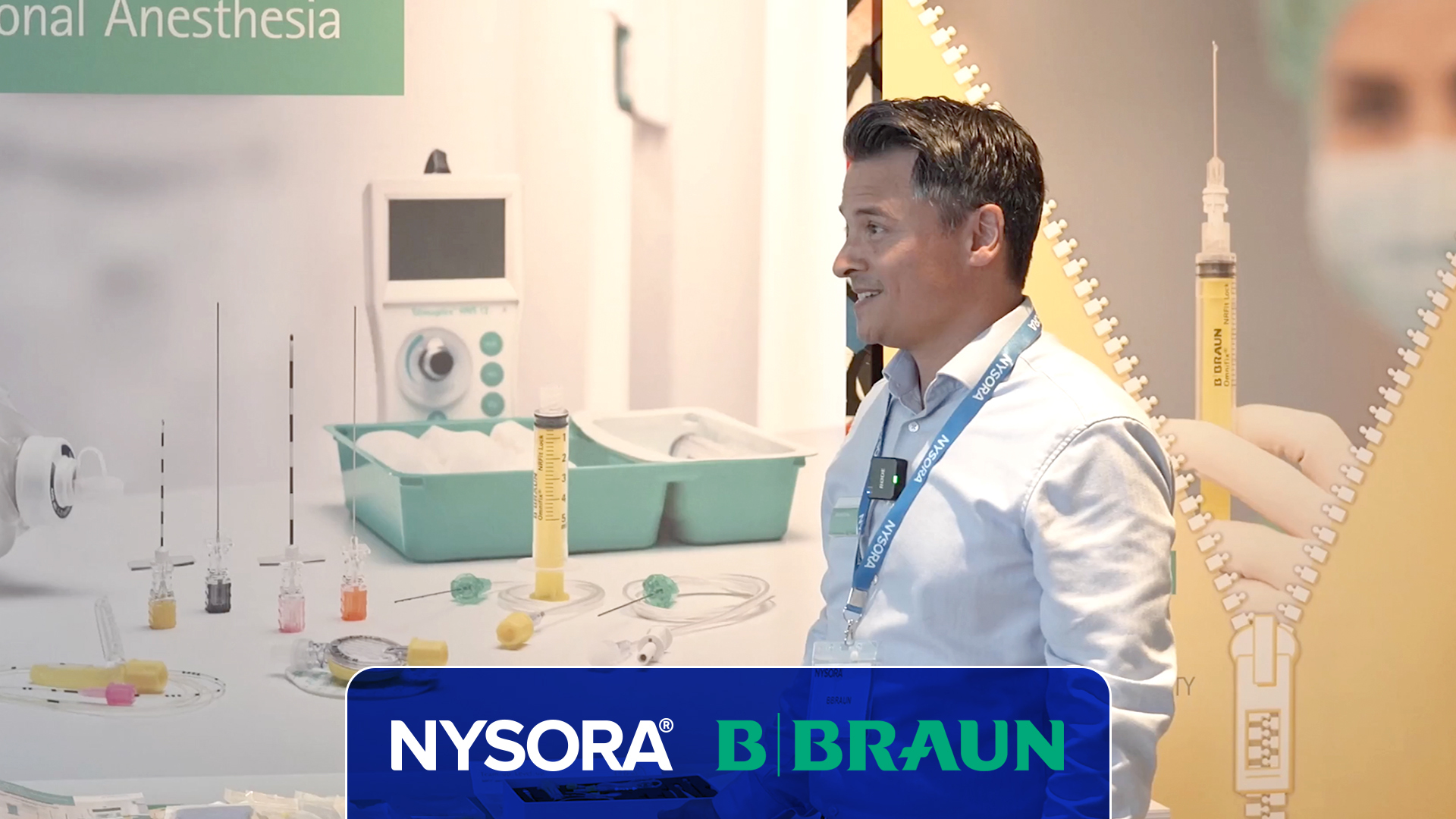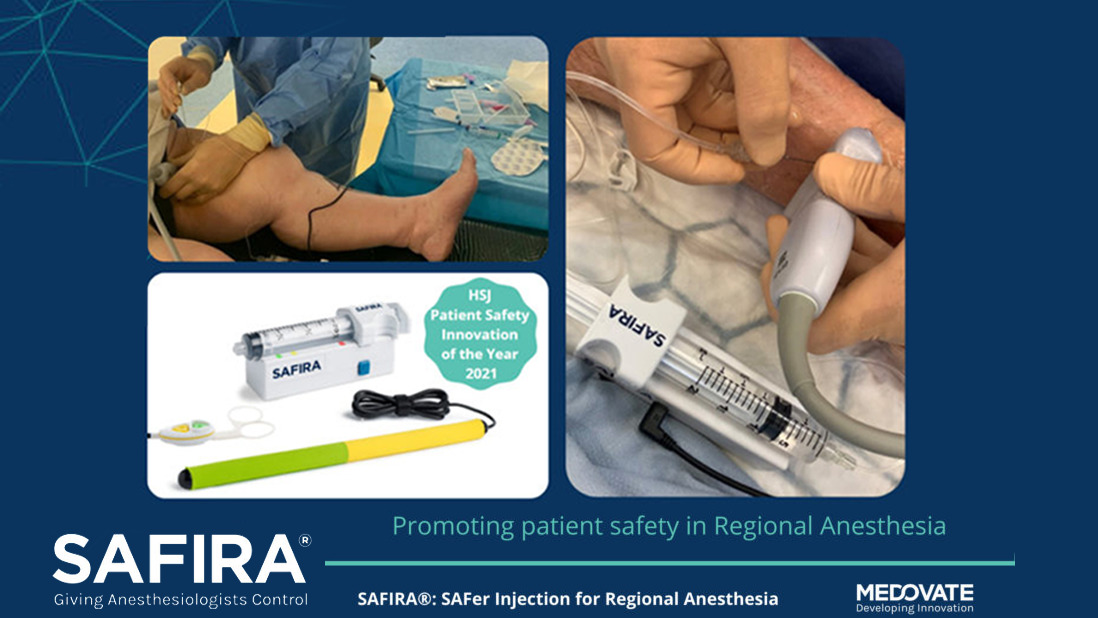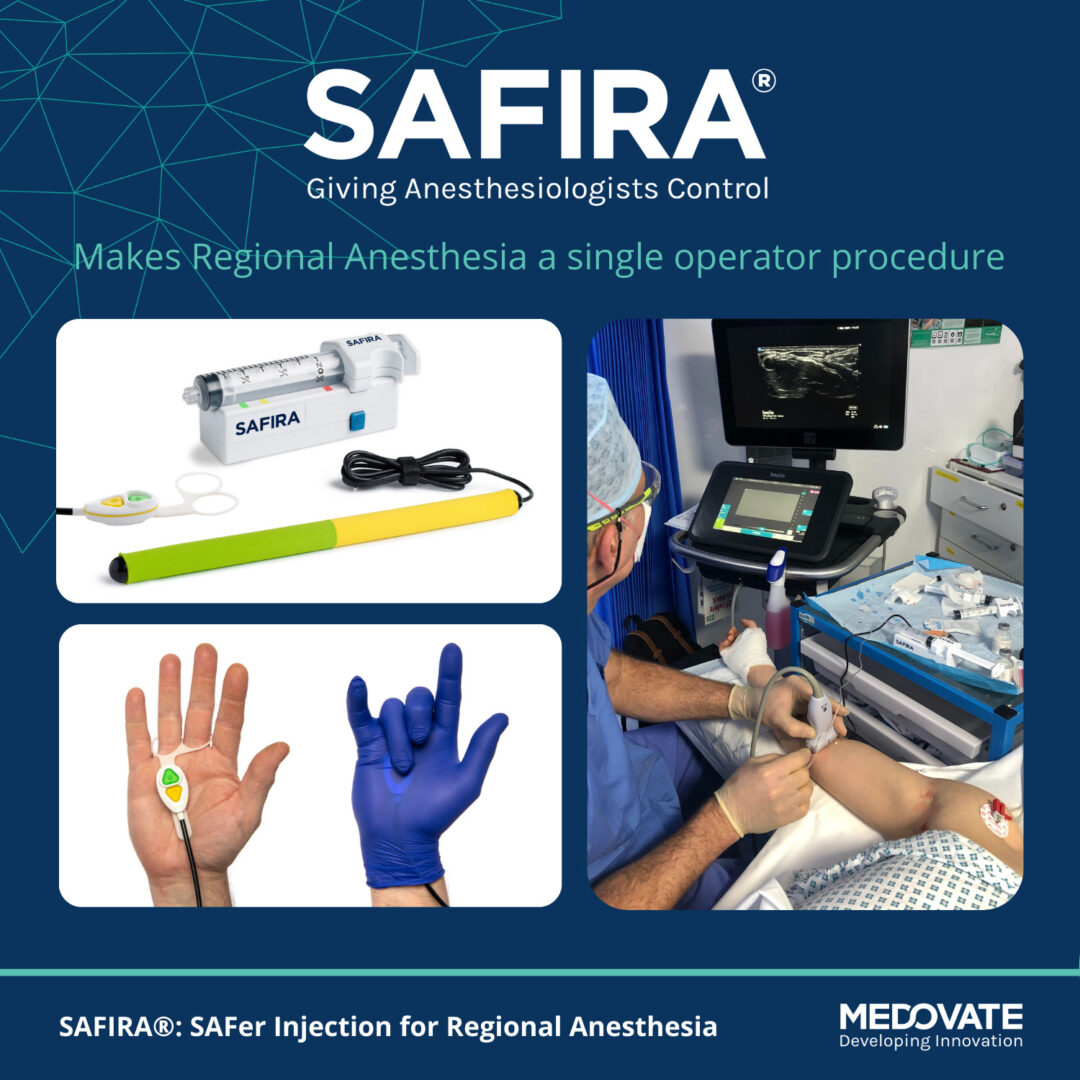September 7th, 2025
Author: Medasense Biometrics
Delivering safe and effective anesthesia requires precise control of hypnosis, analgesia, and, when needed, muscle relaxation. Under general anesthesia, conscious pain is blocked, but the body continues to display unconscious physiologic responses known as nociception.
While non-invasive monitors for hypnosis and muscle relaxation are common, there has been no dedicated solution for objective analgesia monitoring. Clinicians have relied on surrogate signs, such as heart rate (HR) and mean arterial pressure (MAP), which are neither sensitive nor specific to nociception. This makes it challenging to evaluate the success of a regional block and to decide whether and when to supplement with additional analgesics.
The PMD-200™ Monitor
The PMD-200 monitor, powered by the AI-driven NOL-Nociception Level Index® technology, is the first and only FDA-authorized monitor indicated for nociception monitoring in adult patients under general anesthesia in the United States.
The system consists of a proprietary monitoring unit with a reusable non-invasive finger probe and a single-use sensor. It captures four physiological signals:
- Photoplethysmograph (PPG)
- Galvanic Skin Response (GSR)
- Peripheral Temperature (Temp)
- Accelerometer (ACC)
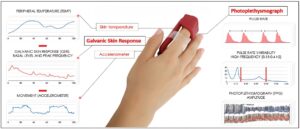
Figure 1-PMD-200 Sensing Platform
How the NOL Index Works
From the PPG and GSR signals, the NOL algorithm extracts and analyzes nociception-related features – including heart rate, heart rate variability, PPG amplitude, and skin conductance level – along with derivatives associated with the autonomic nervous system. Temp and ACC serve as guardrails to ensure signal quality.
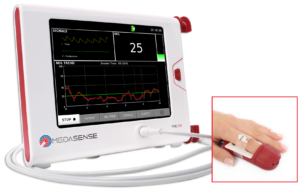
Figure 2 – PMD-200 Bedside Monitor
After a 30-second calibration, the monitor displays a NOL index value (0–100). This value is continuously personalized: initially normalized to large-scale population data, and progressively adapted to the patient’s own physiological responses as more data is gathered.
- 0 represents no nociceptive response.
- 100 represents an extreme nociceptive response.
Clinical Guidelines
Evidence suggests that during general anesthesia:
- NOL values above 25 for more than one minute may indicate the patient requires additional analgesic therapy.
- NOL values between 0–25 represent an appropriately suppressed physiological response to noxious stimuli and suggests adequate analgesia.
The PMD-200 is designed to be used as an adjunct to clinical judgment, in conjunction with other available clinical and vital signs.
Benefits of NOL Monitoring in Regional Anesthesia
Clinical studies have shown that NOL monitoring can:
- Quantify the effectiveness of regional blocks
- Support personalized opioid dosing
- Provide an objective measure of nociception–antinociception balance
- Reduce variability in opioid administration
- Enhance patient safety by minimizing both under- and over-medication
- Support recovery with more personalized and balanced analgesia
Together, these benefits allow anesthesiologists to move beyond subjective interpretation toward a more precise, patient-specific approach.
NOL Monitoring at NYSORA
The PMD-200 represents an important step forward in intraoperative monitoring, giving anesthesiologists a new way to assess analgesia objectively and bring the benefits of personalized anesthesia into daily practice.
Explore the clinical power of NOL monitoring in regional anesthesia! Join our lunchtime symposium at the 18th NYSORA Anesthesia Symposium in New York:
Saturday, Sept. 27 at 1:15 p.m.
Speaker: Pascal Lafferriere-Langlois, MD, MSc, Hôpital Maisonneuve-Rosemont, Montreal, Canada
Dr. Lafferriere-Langlois will share insights on the clinical use of NOL-guided anesthesia.
Learn More
Learn more about NOL technology, clinical evidence, and implementation at www.medasense.com
Follow Medasense on LinkedIn | Twitter | YouTube
For clinical evaluations at your facility, contact: [email protected]
